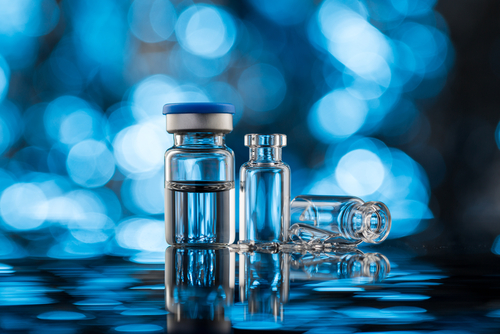Potential Diagnostic Tool Identified for Hereditary Angioedema with Normal C1 Inhibitor Activity, Study Finds
Written by |

A new diagnostic tool has been identified for people with hereditary angiodema (HAE) and normal C1 inhibitor activity, potentially establishing the first method that doctors can use to properly diagnose this genetic condition, a study suggests.
The study, “sgp120 and the contact system in hereditary angioedema: A diagnostic tool in HAE with normal C1 inhibitor,” was published in the journal Molecular Immunology.
HAE is a genetic condition characterized by sudden and recurrent episodes of swelling in the face, hands, feet, upper airways, genitals, and gastrointestinal tract. Though the severity varies significantly among patients, some experience life-threatening symptoms.
Originally, the cause of HAE was attributed to mutations in a protein called C1 inhibitor (C1-INH). Those mutations either led to low levels of the protein — type 1 HAE — or produced a protein with low activity, which is type 2 HAE.
In 2000, however, researchers described a third type of HAE, in which patients experienced the symptoms of angioedema but had normal C1 inhibitor activity levels. This form of HAE, known as HAE-nl-C1-INH, can be caused by mutations in various genes — including the coagulation factor XII, plasminogen, angiopoietin 1, and kininogen 1 — or be of unknown origin when a clear genetic defect cannot be identified.
In people with type 1 and type 2 HAE, deficient C1 inhibitor activity leads to continuous production of an enzyme called plasma kallikrein. High levels of kallikrein are associated with the activation of a biomolecular process known as the contact system.
The contact system is part of a response to certain foreign substances coming into contact with blood plasma, resulting in coagulation — or clotting — and inflammation around a contact site. In the laboratory setting, the contact system can be activated by incubating normal plasma samples in glass. Incubating the plasma in plastic, however, does not trigger contact system activation.
Interestingly, the study found that the contact system is activated spontaneously in the samples taken from people with HAE, though the degree of activation varied between different patient samples.
This study also showed that kallikrein degrades a blood protein called sgp120 — also known as inter-alpha-trypsin inhibitor heavy chain 4 (ITIH4). When purified kallikrein and sgp120 were placed in the same culture, sgp120 was quickly broken down after 20 minutes at 37°C or 98.6°F, which is body temperature.
In the experiments, the researchers incubated plasma samples from each group in both glass and plastic, and measured whether spg120 was degraded over a 12-hour incubation period. These incubation steps were done at 4°C, as this temperature was found to improve spg120 degradation efficiency.
Plasma samples from three groups of donors were tested: 31 samples from type 1 and type 2 HAE patients, 13 from type 3 HAE patients, and 40 from normal donors. Among the 13 individuals with type 3 HAE, six had a factor XII mutation (HAE-FXIIM), three had a plasminogen mutation (HAE-PM), and four were from the unknown group (HAE-UM). The other mutations were not tested.
Consistent with prior observations, when normal plasma samples were incubated in plastic, there was no sign of sgp120 degradation. However, when normal plasma was incubated in glass, sgp120 degradation was observed at the 12-hour time point, as would be expected due to the activation of the contact system.
When type 1 and type 2 HAE samples were tested, spg120 degradation was observed at the starting point in the majority of these samples, regardless of whether they were incubated in glass or plastic. This is consistent with high levels of kallikrein and the spontaneous activation of the contact system.
Unlike type 1 and type 2 HAE, the majority of type 3 HAE samples did not show immediate spg120 degradation. After the incubation period in plastic, however, 75% of HAE-UM samples, 67% of HAE-PM, and 67% of HAE-FXIIM samples (69% overall) demonstrated spg120 degradation and spontaneous contact system activation.
Therefore, the study proposes that spg120 can be used as a biomarker to identify patients with HAE. When normal, type 1/2 HAE, and type 3 HAE plasma samples are incubated in plastic at 4°C for 12 hours, each has a unique response with regard to spg120 degradation.
The researchers also discovered that the C1 inhibitor protein was degraded in the nine type 3 HAE samples that also demonstrated spg120 degradation. Additional tests showed that C1 inhibitor activity was significantly reduced in those nine samples, but no cause for C1 inhibitor loss of function has yet been identified.
“Due to its sensitivity to fragmentation in patients with HAE, our results support the analysis of sgp120 or ITIH4 fragmentation as an important biomarker for HAE-nl-C1inh,” the researchers said.





